7 Best Text Annotation & Labeling Tools In 2025
Explore the top 7 text annotation tools of 2025 essential for NLP projects. From Labellerr's scalability to Prodigy's active learning, this guide covers tools offering precision, customization, and efficiency in data labeling for machine learning.

Text annotation is fundamental for machine learning models in comprehending language nuances. This blog explores seven top-notch text annotation tools, each selected for its precision, scalability, and diverse features. Whether you're delving into sentiment analysis or refining NLP models, this guide helps navigate the world of annotation tools for varying project needs.
Table of Contents
1. Labellerr
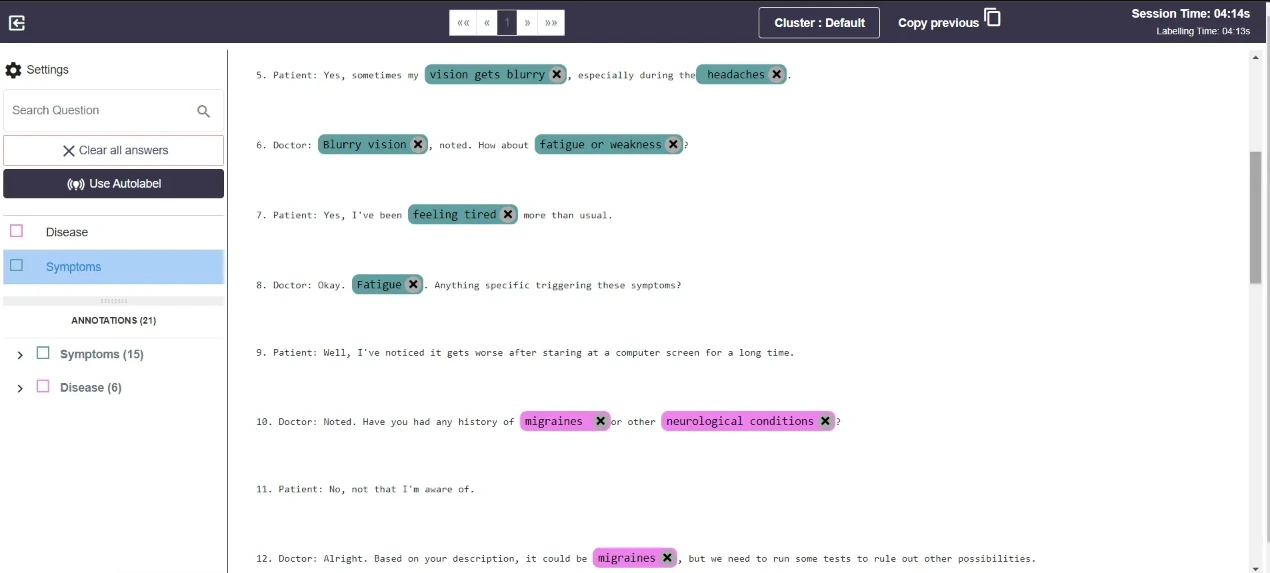
Labellerr is an advanced and comprehensive text annotation tool designed to facilitate the creation of high-quality and accurate annotations for machine learning models at scale. With a focus on precision and scalability, Labellerr empowers users to efficiently label and annotate text data, enabling the development of highly accurate and effective natural language processing (NLP) models.
Key Features:
(i) Comprehensive Text Annotation Capabilities: Labellerr offers a wide range of text annotation features, including sentiment analysis, summarization, translation, named-entity recognition, text classification, question answering, and more. This variety of annotation tools allows users to cater to diverse NLP requirements and tasks.
(ii) Precision in Annotation: The tool ensures accuracy and precision in text annotation, which is crucial for training machine learning models effectively. With customizable workflows and predefined categories for named-entity recognition and text classification, Labellerr assists in creating finely labeled datasets.
(iii) Scalability and Efficiency: Labellerr is built to handle large volumes of text data efficiently. Its automated workflow capabilities enable the labeling of extensive datasets while maintaining high-quality annotations. Users can customize annotation pipelines, collaborate in real-time, and implement QA reviews seamlessly.
(iv) User-Friendly Interface: The tool provides an intuitive and user-friendly interface, making it accessible to both expert annotators and users new to text annotation. The interface allows for easy navigation through annotation tasks and facilitates multiple users with various roles within annotation projects.
(v) Managed Annotation Services: For users seeking professional text annotation services, Labellerr offers fully managed services. This includes access to skilled annotators and linguists who prioritize quality and accuracy, allowing users to focus on other critical aspects of their projects.
(vi) Customization and Collaboration: Labellerr supports customization of annotation workflows to suit specific project requirements. It enables the addition of multiple users, multiple review cycles, inter-annotator agreement building, and various annotation stages, providing complete visibility and control over the annotation process.
(vii) Training Data Generation: By providing high-quality annotated data, Labellerr aids in generating training datasets that are essential for training and improving NLP models, ensuring their accuracy and performance.
(viii) Security and Compliance: Labellerr typically prioritize data security and compliance with privacy regulations, employing encryption, access controls, and adherence to data protection standards to safeguard sensitive information.
Cons:
(i) Limited Format Support: Does not currently support point cloud and 3D data formats.
Pricing:
(i) Pro Plan: Starts at $499 per month for 10-user access with 50,000 data credits included. Additional data credits can be purchased at $0.01 USD per data credit, and extra users can be subscribed to at $29 USD per user.
(ii) Enterprise Plan: Offers professional services, including tool customization and ML consultancy.
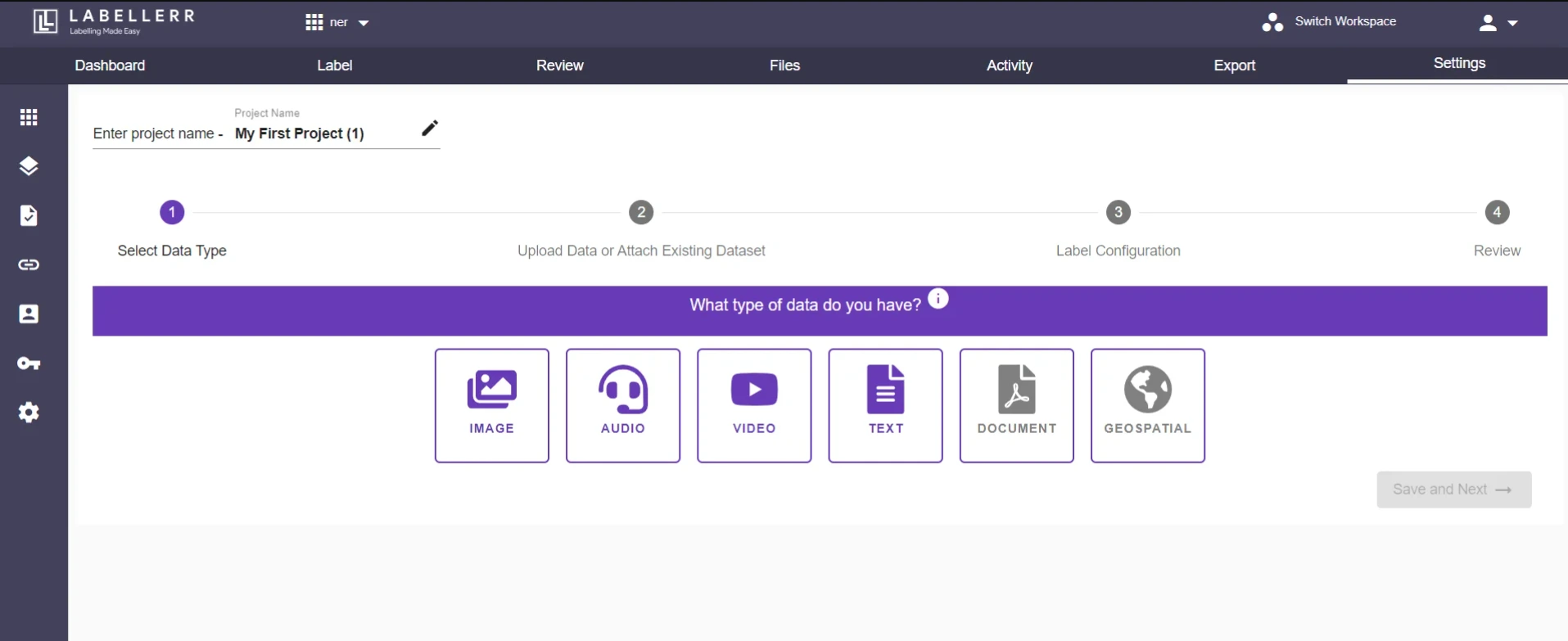
Labellerr stands out as an all-in-one text annotation platform that combines robust annotation tools, scalability, user-friendliness, customization, and managed services to streamline the process of creating accurate training data for NLP models. Its comprehensive suite of annotation features and focus on accuracy make it an invaluable tool for organizations and individuals working on machine learning and NLP applications.
Transform Your Data with Labellerr: From sentiment analysis to complex NLP model refinement, Labellerr provides the tools you need. Starting at $499/month, gain access to a comprehensive features designed to enhance your annotation precision and scalability. Get started today.
2. Prodigy
Prodigy is an advanced annotation tool designed specifically for efficiently training machine learning models. Developed by Explosion AI, the creators of spaCy, Prodigy stands out for its active learning capabilities, sleek interface, and versatile annotation functionalities.
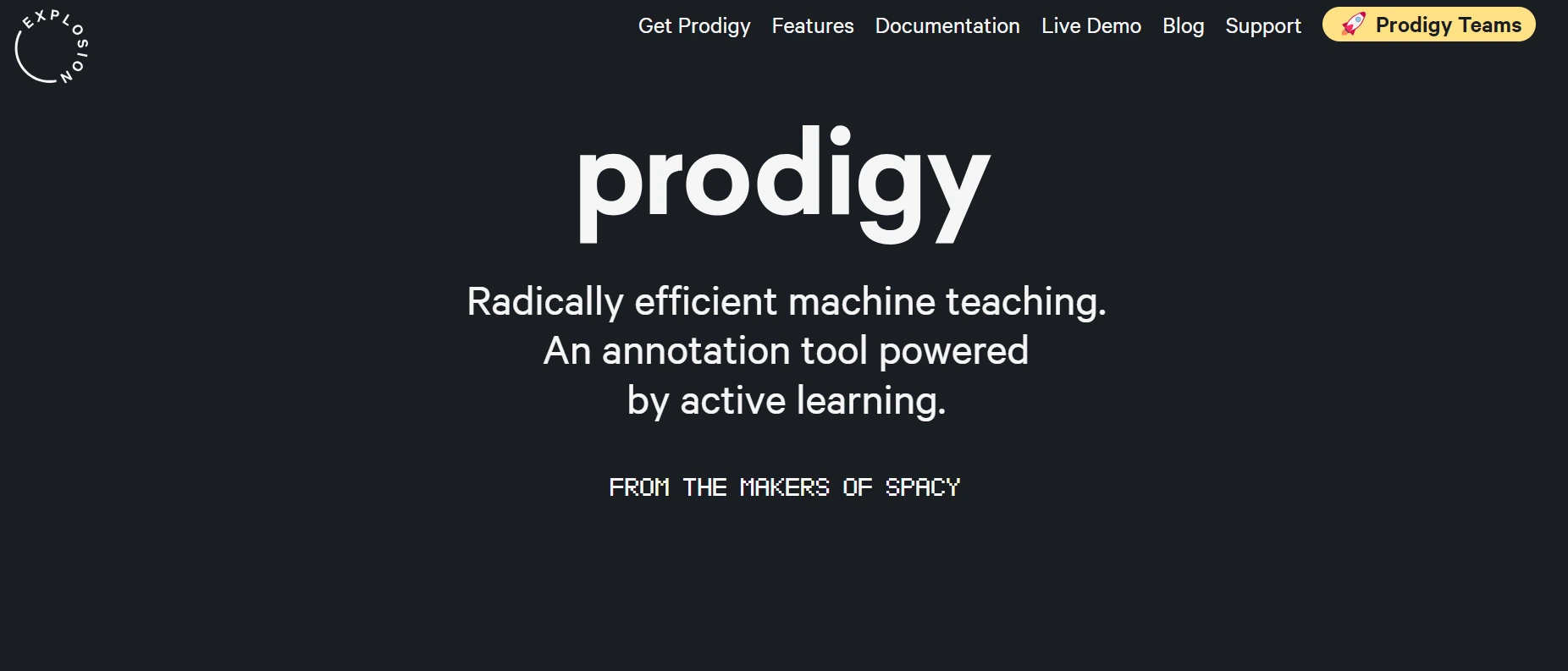
Key Features of Prodigy:
(i) Active Learning: Prodigy leverages active learning, enabling users to annotate only the examples where the model is uncertain, significantly reducing the annotation workload and speeding up the process.
(ii) Text Annotation: It offers robust text annotation functionalities, allowing users to classify text into multiple categories. It supports annotation for any script or language, making it versatile for various linguistic tasks.
(iii) Self-hosted and Scriptable: Prodigy can be self-hosted and is fully scriptable. This allows customization of annotation workflows, enabling users to specify data loading and saving processes, define custom HTML and JavaScript for the front-end, and create tailored annotation interfaces.
(iv) Export Formats: Users can export annotated data in various formats such as jsonl, json, txt, or txt, facilitating compatibility with different machine learning frameworks and pipelines.
(v) Support for Images, Videos, and Audio: Beyond text, Prodigy extends its annotation capabilities to images, videos, and audio, providing a comprehensive solution for diverse data types.
(vi) Integration with JupyterLab: There's an extension available for JupyterLab, enabling users to execute Prodigy commands within notebook cells and annotate data seamlessly without leaving the notebook environment.
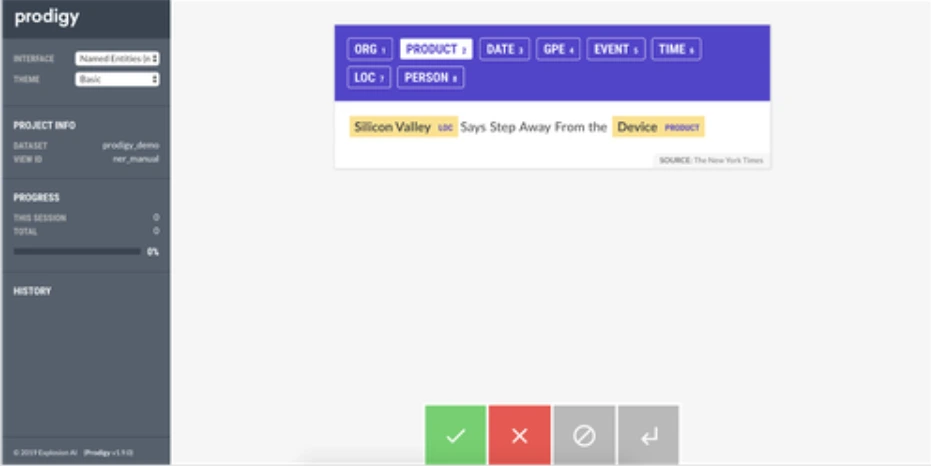
Pros of Prodigy:
- Sleek and modern interface that enhances user experience.
- Efficient active learning approach reduces annotation efforts.
- Self-hosted and fully customizable annotation workflows.
- Support for multiple data formats and various data types, including images, videos, and audio.
Cons of Prodigy:
- Expensive pricing structure, with the cheapest license starting at USD 390. However, it's a perpetual license with 12 months of free upgrades.
Prodigy's efficient active learning methodology, versatile annotation capabilities, and flexibility in customization make it a powerful tool for training machine learning models with annotated data. Despite its cost, Prodigy's efficiency and seamless integration into existing workflows make it a valuable asset for both novice users and experienced data scientists aiming to create production-quality models with minimal annotation effort.
3. Label Studio
Label Studio is an open-source data annotation tool that supports various types of data labeling, including text annotation. It allows users to annotate text data in different formats, such as text classification, named entity recognition (NER), sentiment analysis, and more.
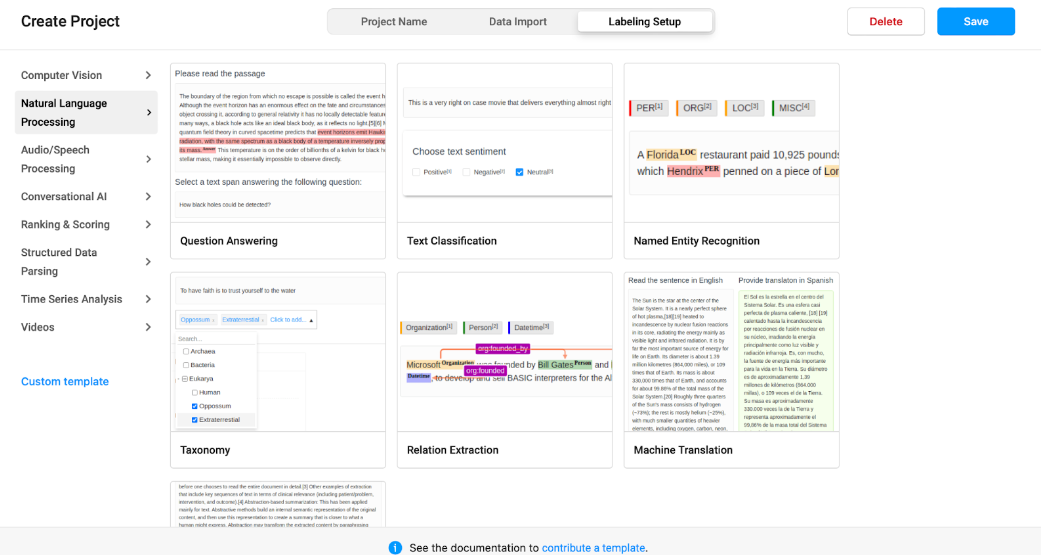
The text annotation tool within Label Studio offers a user-friendly interface where annotators can highlight, classify, or tag specific parts of text according to the task requirements. For instance, in named entity recognition, annotators can identify and label entities like names, locations, dates, etc., within the text.
One of the key functionalities of Label Studio is its capability to integrate with machine learning models. This integration facilitates continuous active learning, wherein the annotated data can be used to train and improve machine learning models iteratively. It allows for the incorporation of machine learning predictions into the annotation process, enabling the tool to suggest or pre-populate annotations based on model predictions. This helps in speeding up the annotation process and enhancing the overall accuracy of the annotations.
Overall, Label Studio's text annotation tool provides a versatile and customizable platform for annotating text data and supports integration with machine learning models to facilitate continuous improvement and efficiency in the data annotation pipeline.
4. Doccano
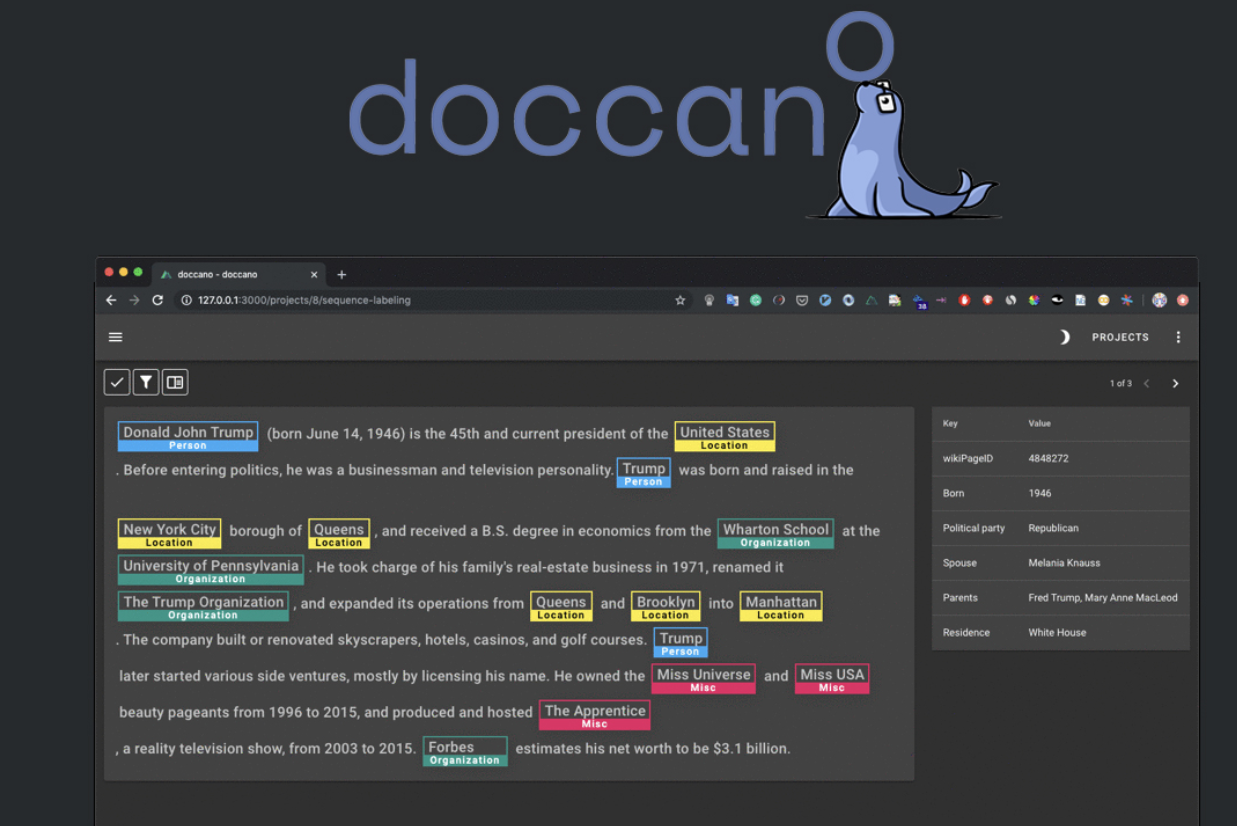
Doccano is an open-source, web-based text annotation tool designed to streamline the process of annotating text data. It offers a user-friendly interface and can be self-hosted, providing flexibility and control over the annotation environment. The tool enables users to label text for various purposes such as document classification, sequence labeling, and sequence-to-sequence tasks.
Key Features and Capabilities:
(i) User-Friendly Interface: Doccano boasts a simple and easy-to-use interface, making it accessible even for beginners. Its web-based UI allows for convenient annotation tasks without the need for extensive setup or configuration.
(ii) Customization and Configuration: All configuration within Doccano is done through its intuitive web user interface, eliminating the need for complex setups. Users can tailor the tool for document classification or sequence labeling based on their specific use case requirements.
(iii) Annotation Options: Doccano provides annotation options on document level or span level, catering to different use cases. However, it doesn't support defining relationships or attributes between annotations, unlike some other tools like brat.
(iv) Export Formats: The tool supports exporting annotated data in formats such as CSV or JSON-based, depending on the chosen project type. This flexibility facilitates the integration of annotated data into various machine learning pipelines or downstream applications.
(v) Collaboration and Multi-user Support: While Doccano allows multiple users, its collaborative features are limited. Nevertheless, it permits team collaboration, enabling multiple users to work on the same annotation project concurrently.
(vi) Annotation Guidelines and Statistics: Doccano offers the ability to write and save labeling guidelines directly within the application using Markdown. It also provides a basic diagrammatic overview of labeling statistics, aiding in tracking progress and performance.
Pros:
- MIT License, allowing for modification and customization.
- Ability to assign key shortcuts for faster annotation.
- Suitable for beginners with its straightforward interface.
- Offers export options in CSV or JSON formats.
Cons:
- In a self-hosted environment, Doccano may experience issues like shuffling the order of annotations and occasional lagginess.
- Lack of official API, although there are unofficial attempts for an API client.
- Limited collaborative labeling features compared to some other annotation tools.
Doccano stands out for its simplicity and ease of use, making it an attractive choice for users seeking a straightforward text annotation tool for document classification and sequence labeling tasks. However, users should be mindful of potential performance issues, especially in self-hosted environments, and the tool's limitations in terms of collaborative features.
5. LightTag

LightTag is a comprehensive text annotation tool that streamlines and manages text annotation projects across various layers to optimize the annotation workflow. It offers a range of features and functionalities catering to individual users, teams, and on-premise deployment needs. Here are some highlights based on the content provided:
Layers Optimizing Annotation Flow:
- UI & UX: User-friendly interface and experience, ensuring ease of navigation for annotators.
- Client Servers: Infrastructure supporting project execution and management.
- Quality Data by Design: Focus on generating high-quality annotated data.
- Metrics: Tracking and analyzing metrics to measure annotation performance.
- Automation: Implementing automation to enhance efficiency in the annotation process.
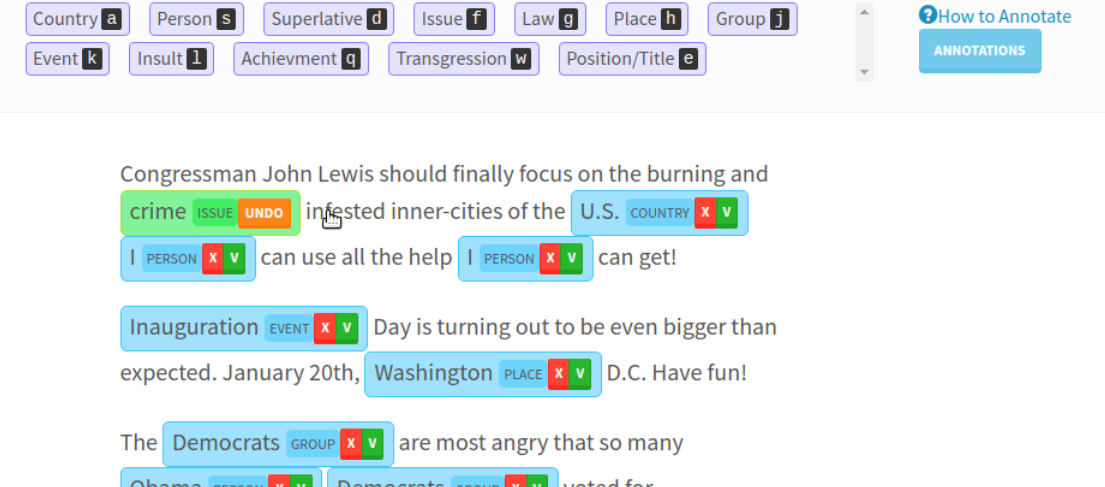
Key Features:
- Annotation Types: Span Annotation, Document Classifications, Document Tagging, Relationships.
- Annotator Productivity: Tools like Keyboard Shortcuts, Phrase and Subword Annotations to enhance efficiency.
- Project Management: Multiple Annotators Per Document, Task Assignment, Productivity Reports, Role-Based Access Control.
- Quality Control: Inter-Annotator Agreement Reports, Precision and Recall Reports, Review & Adjudication.
- Data And Compliance: GDPR Compliance, Data Backups, JSON/CSV Uploads, API Integration, On-premise Deployments, LDAP/SSO.
- Audit Logs: Tracking and maintaining records of actions taken within the platform for accountability.
6. Tagtog
Tagtog is a versatile and user-friendly web-based text annotation tool designed to streamline the process of annotating and tagging textual data. It offers a range of features and functionalities catering to various annotation needs.

Here's a detailed elaboration on its key aspects:
1. Versatile Annotation Capabilities:
- Supports multiple data formats: Users can work with plain text, URLs, and upload various file types (such as PDFs, HTML, CSV, Markdown, etc. - although some features might be restricted to paid plans).
- Offers manual annotation: Users can label and annotate data manually, and the tool learns from these annotations to automate similar tagging in the future.
- Automatic recognition and tagging: Once a particular entity is manually labeled, the tool automatically identifies and tags similar occurrences in the text.
- Group annotation for teams: Supports collaborative annotation, allowing multiple users to work together on the same project.
2. Ease of Use:
- Cloud-based tool: No installation is required, making it easily accessible via a web browser.
- Intuitive interface: Although it might be slightly confusing initially, the interface becomes user-friendly with use and provides a straightforward approach to annotation tasks.
3. Advanced Features (Some available in paid plans):
- Machine learning capabilities: Learns from annotations to assist in automated tagging.
- API for continuous model training: Allows users to integrate the tool's functionality into their workflow and retrain models based on annotated data.
- Docker image for private cloud deployment: Offers flexibility for users who prefer to run the tool in a private cloud environment.
- Support for importing annotated data from user-trained models: Enables reviewing and modifications in the annotation editor, followed by downloading the data via the API for further model training or analysis.
4. Pricing and Plans:
- Free basic functionalities: Users can start annotating after creating an account.
- Paid features: Advanced functionalities, such as automatic annotation, native PDF annotations, and dedicated customer support, are available through subscription plans.
- Pricing can be considered relatively high, with the cheapest tier costing around USD 135 per month, limiting access to some premium features.
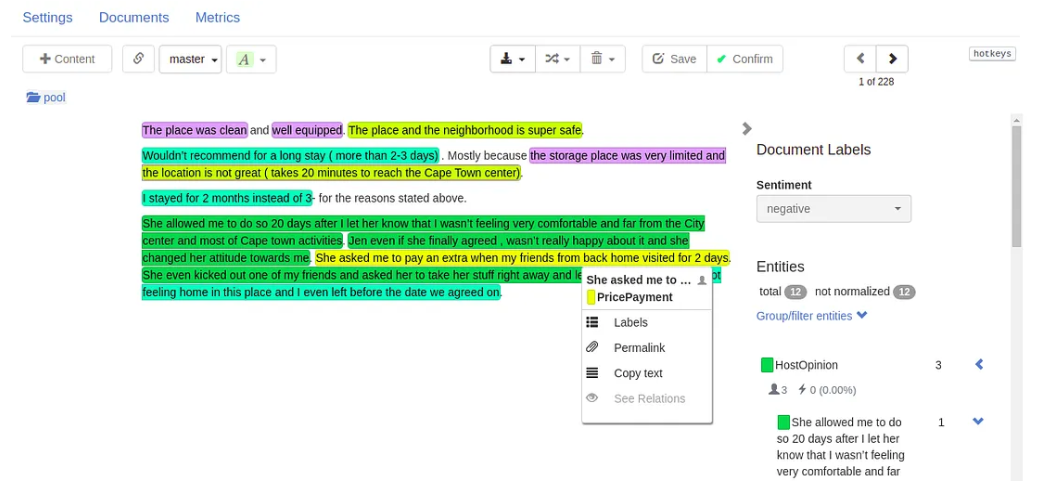
5. Output Formats:
- Offers a wide range of output formats, allowing users to export annotated data in various formats tailored to their specific requirements.
Tagtog serves as a valuable tool for text annotation, providing flexibility, learning capabilities, collaborative features, and support for various data formats, albeit some advanced functionalities are available at a premium cost. Users seeking efficient and flexible text annotation with machine learning capabilities may find Tagtog beneficial for their projects.
7. Brat

The Brat annotation tool is a browser-based, open-source software designed for collaborative text annotation. It offers a user-friendly interface for annotating expressions and relationships within text documents. Here's a detailed breakdown of its features, advantages, and limitations:
Features:
Annotation Capabilities: Brat facilitates the annotation of expressions and relationships between them in text documents. It allows users to label and identify specific elements within the text, making it suitable for tasks requiring structured annotation.
Integration: The tool offers integration with external resources like Wikipedia and supports automatic text annotation tools, enhancing its functionality and usefulness for various annotation tasks.
Annotation Comparison: Brat comes with an integrated annotation comparison feature, enabling users to compare and analyze different annotations made by multiple collaborators.
Configuration: Project-specific labeling schemes are defined using .conf files, which are plain text files. This allows for customization and tailoring of the annotation setup as per project requirements.
Standoff Annotation Format: Brat stores annotations separately from the original document text in a standoff format. This format ensures that the annotated text remains unaltered, which can be beneficial for certain workflows and conversions to other formats.
API Support: Brat offers an API, enabling continuous model training and integration with other tools or systems.
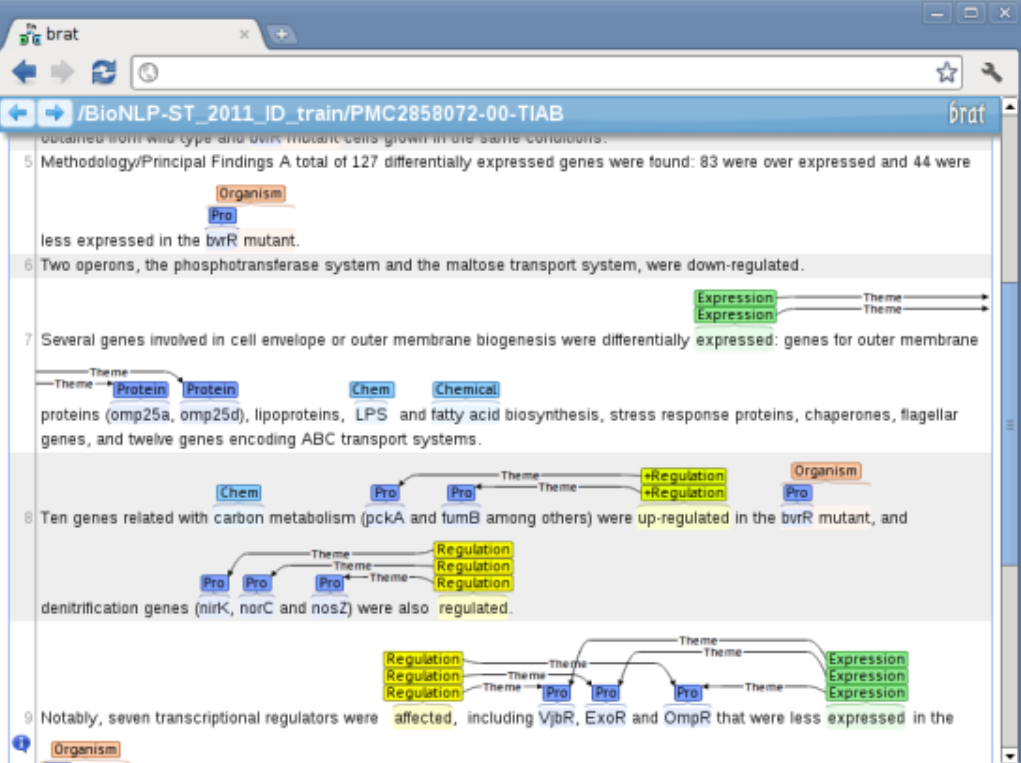
Advantages:
- User-Friendly: Brat offers a straightforward and intuitive interface, making it simple to use for collaborative text annotation tasks.
- Open Source: Being open-source under the MIT License, it allows users to access and modify the tool according to their needs.
- Standoff Format: The standoff format of annotations enables easy conversion to other formats, enhancing flexibility for further analysis or integration into different systems.
- Integration: Integration with external resources and automatic annotation tools enhances its capabilities and usefulness for various annotation tasks.
Limitations:
- Local Installation: Brat needs to be installed locally, which might be seen as a drawback for users looking for online or cloud-based annotation solutions.
- Outdated UI: The tool's interface is considered outdated, last updated in 2012. This could potentially impact user experience and preference for more modern interfaces.
Brat is a powerful tool for structured text annotation, offering a range of features suitable for collaborative annotation tasks. However, its local installation requirement and somewhat outdated interface might pose challenges for users seeking online solutions with more contemporary UI designs.
Conclusion
Labellerr, Prodigy, Label Studio, Doccano, LightTag, Tagtog, and Brat stand as pillars in text annotation, each offering unique strengths. Their user-friendly interfaces, scalability, and customization options empower users to create precise datasets, driving advancements in NLP models. These tools play a vital role in refining language-related machine learning projects for researchers, developers, and organizations seeking excellence in their endeavors.
Read our other listicles:
1. 7 Best Object Detection Tools For Computer Vision in 2025
2. 7 Best Audio Annotation Labeling Tools In 2025
Frequently Asked Questions
1. Do ML models need data labeling?
Yes, machine learning (ML) models often require labeled data to learn patterns and make accurate predictions. Data labeling involves annotating or tagging data with relevant information, such as classifications, categories, or annotations, enabling ML models to understand and generalize from the labeled examples provided.
High-quality labeled data is crucial for training supervised learning models, as it forms the basis for the model to recognize patterns and make predictions based on the provided labels. However, some ML techniques, like unsupervised learning, may not always necessitate labeled data for training, as they can derive insights from unlabeled data by identifying inherent patterns or structures within the information.
2. Why is text annotation important?
Text annotation is crucial because it adds structure and meaning to unstructured textual data, enabling machine learning models to comprehend, interpret, and extract valuable insights. By annotating text with labels, entities, sentiment, or relationships, it provides context and clarity, which is essential for training natural language processing (NLP) models.
These annotations serve as the foundation for various NLP tasks like sentiment analysis, named entity recognition, machine translation, and text summarization. Accurate and well-defined text annotations enhance model performance, enabling more precise analysis and understanding of textual information, ultimately improving the quality of AI-driven applications and services.
3. What is a data labeling tool?
A data labeling tool is software designed to identify raw data across various formats like images, text, and audio, aiding data analysts in labeling this data based on specific methods such as bounding boxes, landmarking, polylines, named entity recognition, and more. This tool assists in the creation of high-quality labeled data suitable for training machine learning models, tailoring features and labels according to the requirements specific to each data type.

Simplify Your Data Annotation Workflow With Proven Strategies
.png)


